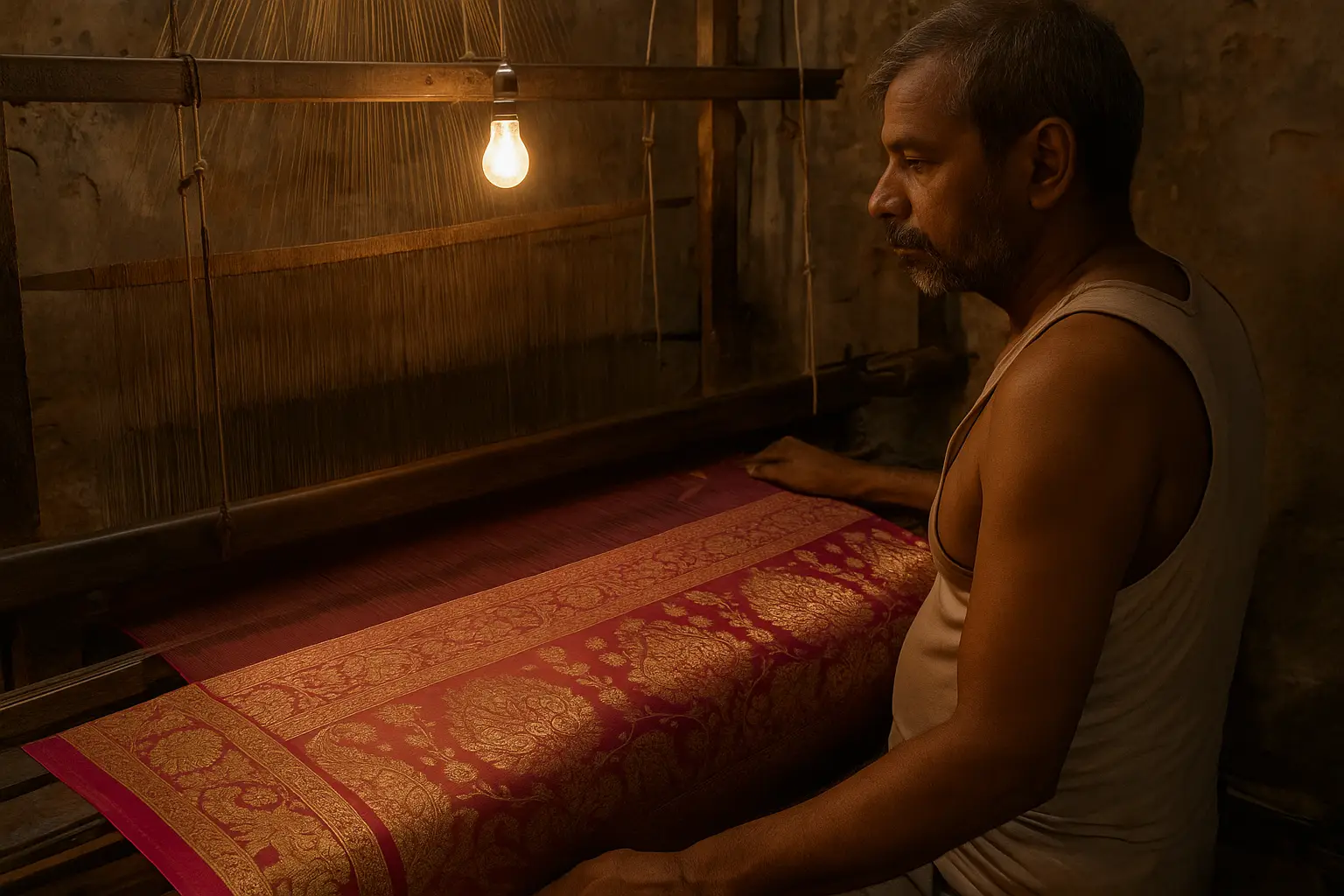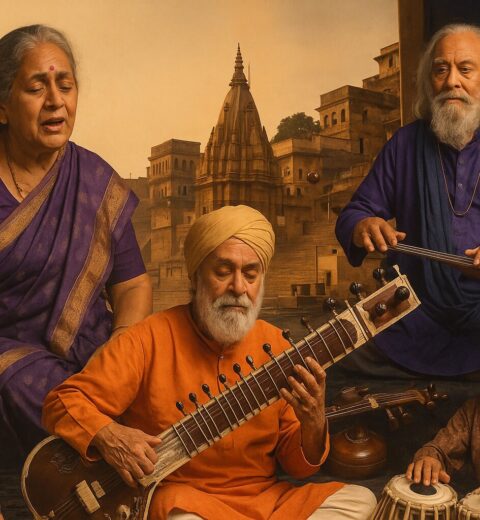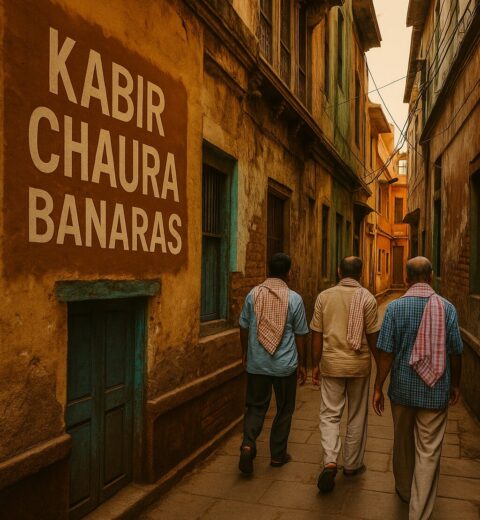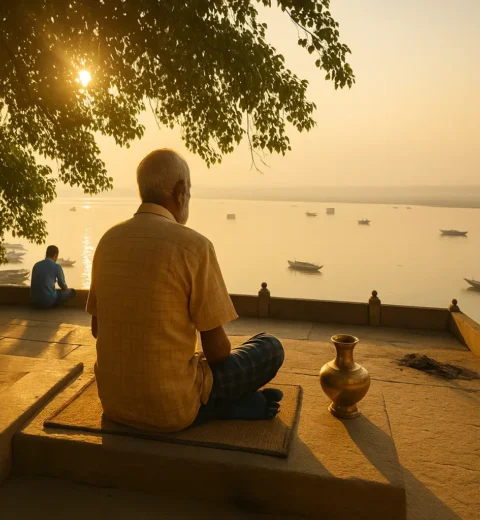In Banaras, even the silence has texture—and the loom, a heartbeat.”
The ghats may be its face, but the soul of Varanasi lies deeper—in the dimly lit rooms where looms hum and silk breathes to life. These looms are tended not by machines, but by hands that have woven legacy into fabric for centuries. The Banarasi saree, globally celebrated for its elegance, begins its journey in the humble homes of the bunkars—the weavers of Varanasi.
A Heritage Stitched in Time
The art of Banarasi weaving dates back to the Mughal era, when Indian craftsmanship and Persian motifs fused to create brocade fabrics unmatched in their finesse. Using pure mulberry silk, gold and silver zari, and the Kadhua(handwoven motif) technique, Banarasi sarees became wedding treasures and royal heirlooms.
But what makes them truly special is not the material—it is the life woven into every thread.
From the Lens of Bunkar – The Silent Crisis
The 2018 documentary “Bunkar: The Last of the Varanasi Weavers”, directed by Satyaprakash Upadhyay, offers a rare and intimate look into the lives of these master craftsmen.
- The film reveals that most weavers begin training by age 10, often foregoing formal education, dedicating themselves entirely to the loom.
- Weaving is not a job; it is a sacred inheritance, handed down through generations, often from father to son.
- At one point, over 2 million people in and around Varanasi were engaged in handloom weaving. Today, less than 5,000 remain active.
This steep decline is not due to lack of skill or artistry, but due to economic pressures, social neglect, and the invasion of power looms and cheap imitations.
The Faces Behind the Fabric
In areas like Madanpura, Reori Talab, and Lallapura, you’ll find names like Haseen Mohammad, a National Award-winning artisan who supervises 70 looms, and Shahid Junaid, an eighth-generation weaver continuing the legacy of the Haji Munna family.
These weavers:
- Use traditional pit looms where the artisan sits below ground level
- Spend 15 to 180 days weaving a single saree
- Specialize in signature designs like Jangla, Shikargah, Butidar, and Tanchoi
Each saree is a living document of heritage—no two are ever exactly the same.
A Craft Under Siege
As Bunkar heartbreakingly shows:
- Middlemen often take the lion’s share, leaving the actual artisan with less than 10% of the final saree’s price.
- Social status has declined to the extent that weavers struggle to find marriage matches for their children due to perceived job instability.
- There’s a misplaced perception that handloom sarees should be bargained over, while luxury watches or phones are bought without question.
The emotional core of the documentary lies in this: If the weaver disappears, the Banarasi saree loses its soul.
Resistance and Revival
There is hope. There is movement.
- In 2009, the Banarasi saree received the Geographical Indication (GI) tag, protecting it from counterfeit machine-made replicas.
- Designers like Sabyasachi, Gaurang Shah, and Raw Mango are actively working with traditional weavers.
- Organizations like ReshaMandi and Okhai have brought global e-commerce access to the looms of Banaras.
As one weaver in Bunkar puts it:
“A handloom saree is not a product. It is a story. You’re not buying fabric, you’re buying a part of someone’s life.”
How to Witness This Legacy in Banaras
Through Explore Banaras, visitors can:
- Visit active loom houses in Madanpura and Peeli Kothi
- Watch live weaving demonstrations and zari work in progress
- Purchase directly from master weavers, ensuring authenticity and fair pay
- Attend storytelling sessions about motifs, weaving techniques, and how looms are tuned like musical instruments
Buy Less. Buy Handloom. Buy With Heart.
In today’s fast-fashion world, a Banarasi handloom saree is resistance. It is slow, thoughtful, and born of heritage. By buying one, you are doing more than acquiring a garment—you are keeping alive a culture, a language, and a family tradition that has outlasted empires.
So the next time you’re in Varanasi, float not just on the Ganga—but into a weaver’s home. Sit by the loom. Listen to its rhythm. And let a saree choose you.





